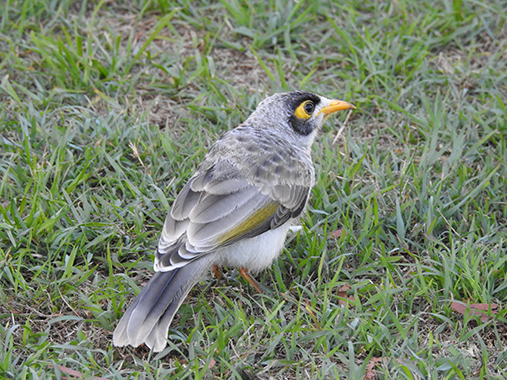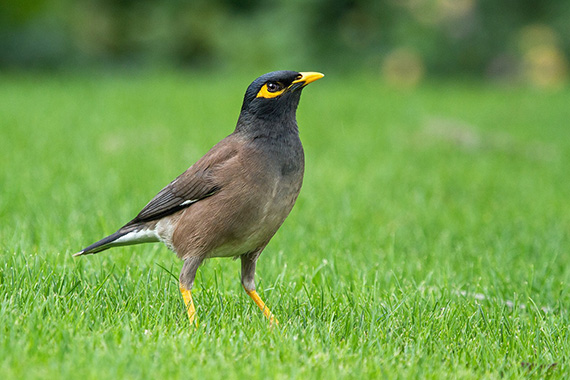INDIAN ( COMMON ) MYNAH
(Acridotheres tristis)


NATIVE NOISY MINER
INTRODUCED INDIAN OR COMMON MYNAH
Our native Noisy miner should not be confused with The Indian Mynah,or as it is also known, Common Mynah. It’s natural range spans from Turkestan to India, the Andamans, and Sri Lanka, but it is an unwelcome guest in Australia.
The Indian Mynah was originally introduced by humans in Melbourne back in 1862 from Southeast Asia, it quickly made itself at home. In 1883, they were transported to Northern Queensland under the guise of combating insects in cane fields. However, this feral bird has now become a serious pest, causing havoc in most cities and towns along the east coast of Australia, and in some areas, reaching plague proportions.
While the Indian Mynah might share some physical attributes with our native Noisy Miner, such as body shape, beak, eye, and leg colors, the similarities end there. This species sports a distinctive chocolate brown head, neck, and throat with a mesmerizing green sheen. The rest of its body is primarily adorned in a fawn color, featuring hints of white on the wingtips and beneath the tail. Their beak, the area behind their eyes, and their legs are a bright and inviting yellow.
Unlike the Noisy Miner, Indian Mynahs are opportunistic scavengers in urban parks, gardens, and streets. They are not picky eaters and will consume nearly anything, thriving on garbage, scraps, vegetable matter, other bird’s eggs, and even preying on young hatchlings and small fledgling birds.
Their behavior is more aligned with following humans rather than adhering to natural vegetation and seasons. They are known for their aggressiveness, and their increasing numbers are encroaching upon native birds’ nesting sites, feeding grounds, and even the skies. This has dire consequences, as they displace and sometimes kill not only our native avian friends but also small mammals and bats.
What We Can Do: Take Action Against the Indian Mynah Invasion
It’s vital for us to take action to mitigate the impact of the Indian Mynahs on Australia’s delicate ecosystem.
Here are some practical steps:
Keep a lid on your garbage and compost bin to discourage scavenging.
If you have domestic pets, try to feed them inside whenever possible. If feeding outside, remove leftover food and dishes as soon as your pet has finished eating.
Ensure that poultry pens are mynah-proof to protect your feathered friends.
Contribute to the restoration of Australia’s native flora and fauna by planting native trees and flowering shrubs, which attract native birds.
Obtain a mynah trap from your council, which can help control their numbers.
Block any holes in roofs and eaves to prevent them from nesting.
Mynas like tidy lawns, manicured hedges and hard surface areas, so creating a more bush-like native garden will help keep them away.
One small but impactful measure is removing Indian Mynah birds from Rosella nesting boxes, a practice that has been shown to be successful. Within a few hours, some Rosellas may have already settled back in, ready to lay their eggs, ensuring the survival of Australia’s native avian species.
In the collective effort to protect Australia’s unique biodiversity, let’s work together to bid farewell to the unwelcome Indian Mynah and preserve the harmony of our natural world.
